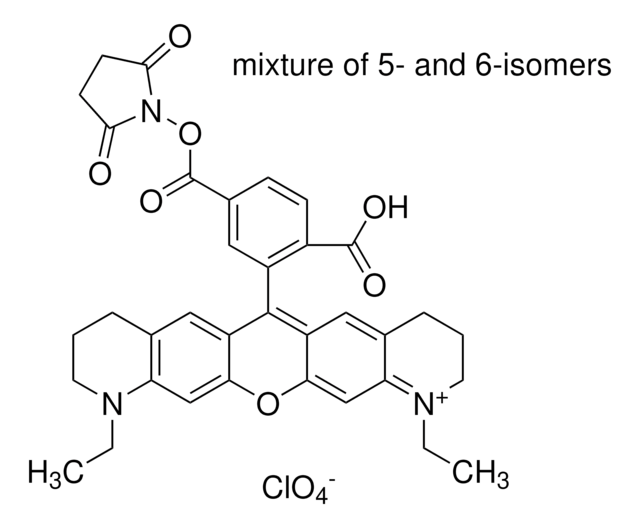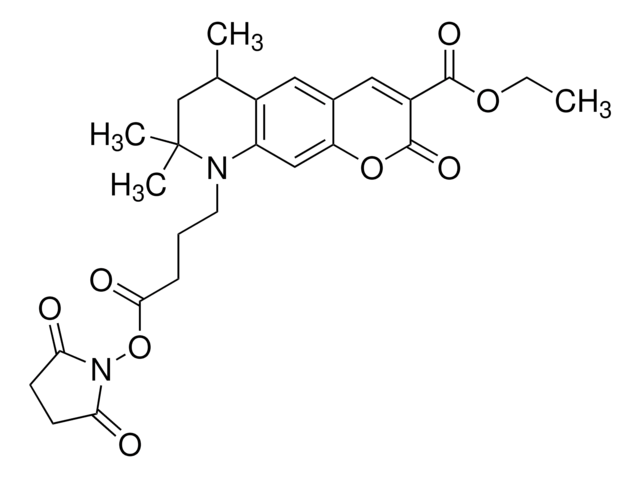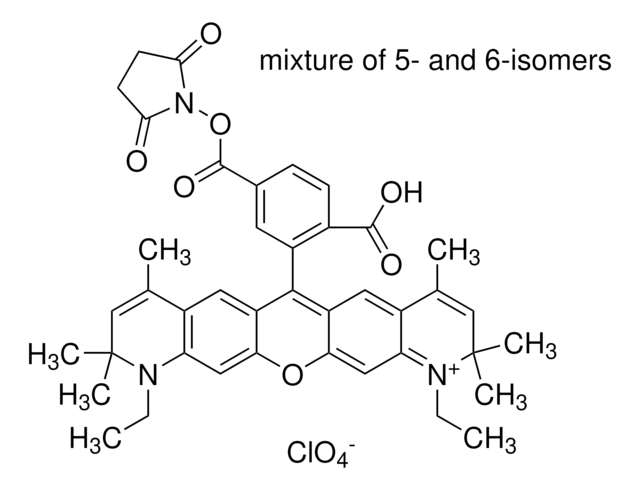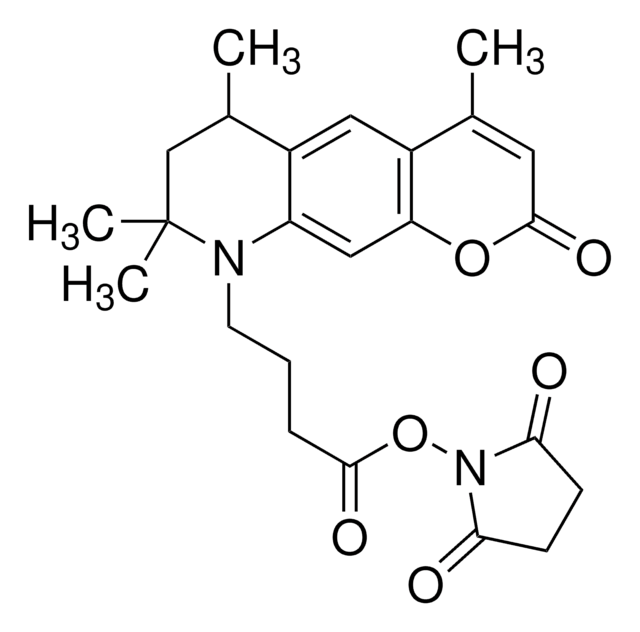41698
Atto 488 NHS ester
BioReagent, suitable for fluorescence, ≥90% (HPLC)
Synonyme(s) :
Atto 488
About This Item
Produits recommandés
Gamme de produits
BioReagent
Niveau de qualité
Pureté
≥90% (HPLC)
≥90% (degree of coupling)
Fabricant/nom de marque
ATTO-TEC GmbH
λ
in methanol: water (1:1) (with 0.1% perchloric acid)
Absorption UV
λ: 501-507 nm Amax
Adéquation
suitable for fluorescence
Température de stockage
−20°C
Catégories apparentées
Description générale
Application
Caractéristiques et avantages
- Strong Absorption.
- High Fluorescence quantum yield.
- High Photostability.
- Excellent water solubility.
Informations légales
Produit(s) apparenté(s)
Code de la classe de stockage
11 - Combustible Solids
Classe de danger pour l'eau (WGK)
WGK 3
Équipement de protection individuelle
Eyeshields, Gloves, type N95 (US)
Certificats d'analyse (COA)
Recherchez un Certificats d'analyse (COA) en saisissant le numéro de lot du produit. Les numéros de lot figurent sur l'étiquette du produit après les mots "Lot" ou "Batch".
Déjà en possession de ce produit ?
Retrouvez la documentation relative aux produits que vous avez récemment achetés dans la Bibliothèque de documents.
Les clients ont également consulté
Articles
Fluorescent Labeling of Peptides
Notre équipe de scientifiques dispose d'une expérience dans tous les secteurs de la recherche, notamment en sciences de la vie, science des matériaux, synthèse chimique, chromatographie, analyse et dans de nombreux autres domaines..
Contacter notre Service technique




